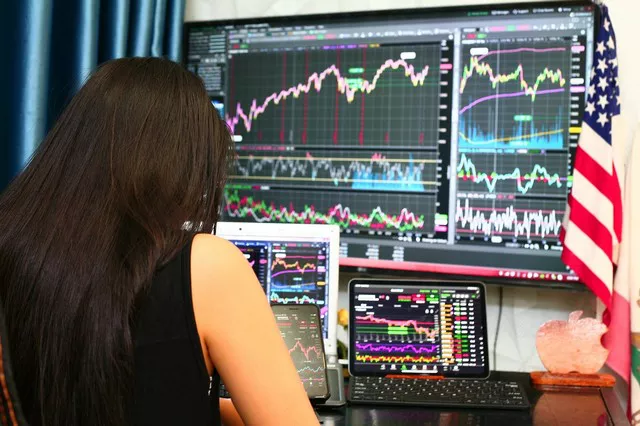In the complex world of financial markets, understanding how futures are priced is essential for traders and investors. Futures contracts, which derive their value from an underlying asset, involve intricate pricing mechanisms influenced by various factors.
The Basics of Futures Pricing: An Overview
Futures pricing is rooted in the concept of forward pricing. A futures contract represents an agreement between two parties to buy or sell an asset at a predetermined price on a specified future date. The price at which this agreement is made is known as the futures price. It’s crucial to distinguish between the futures price and the spot price, which is the current market price of the underlying asset. The relationship between these two prices forms the foundation of futures pricing.
Spot Price and Futures Price: The Convergence Principle
The convergence principle is a fundamental concept in futures pricing. As the expiration date of a futures contract approaches, the futures price should converge to the spot price. This is because, at the contract’s expiration, the futures and spot prices should theoretically be the same. Traders capitalize on the potential discrepancies between the spot and futures prices, aiming to profit from the convergence as the contract approaches maturity.
Cost of Carry Model: A Guiding Framework
The cost of carry model serves as a guiding framework for understanding how futures prices are determined. This model considers the cost associated with carrying an asset until the futures contract’s expiration. The cost of carry includes factors such as financing costs, storage costs (for commodities), and any income generated by the asset (such as dividends for stocks). The relationship between the spot price, the risk-free interest rate, and the time to expiration is encapsulated in the cost of carry model.
Interest Rates and Futures Pricing: The Yield Curve Effect
Interest rates play a pivotal role in futures pricing. The risk-free interest rate is a key component of the cost of carry model. Changes in interest rates can impact the pricing of futures contracts. The yield curve, which represents the relationship between interest rates and the time to maturity of debt securities, can influence the cost of carry and, consequently, the pricing of futures contracts with varying expiration dates.
Supply and Demand Dynamics: Market Forces at Play
Like any other financial instrument, futures prices are subject to the forces of supply and demand. Market participants, including hedgers, speculators, and arbitrageurs, contribute to the overall demand and supply for futures contracts. Changes in market sentiment, economic conditions, and geopolitical events can shift the balance between buyers and sellers, exerting pressure on futures prices.
Volatility and Options Pricing: Implications for Futures
Volatility, a measure of the degree of variation of a trading price series, has implications for futures pricing. Higher volatility tends to result in higher option prices, influencing the cost of carry and, consequently, futures prices. Traders and investors often monitor implied volatility, derived from options prices, as a gauge of market expectations. Understanding volatility trends is crucial for assessing the risk and potential returns associated with futures contracts.
Seasonality and Cyclical Factors: Navigating Patterns
Certain commodities exhibit seasonal or cyclical patterns that can impact futures pricing. Agricultural commodities, for instance, may experience seasonal variations based on planting and harvesting cycles. Traders who understand and anticipate these patterns can make more informed decisions about when to enter or exit futures positions, taking advantage of historical trends in pricing behavior.
Arbitrage Opportunities: Correcting Price Discrepancies
Arbitrage is a fundamental force in financial markets that helps correct price discrepancies between related assets. In the context of futures pricing, arbitrageurs seize opportunities to exploit price differentials between the futures and spot markets. By buying low and selling high (or vice versa), arbitrageurs contribute to the efficient pricing of futures contracts, ensuring that deviations from fair value are short-lived.
See also: How do futures predict the market?
Government Policies and Economic Indicators: External Influences
Government policies and economic indicators can exert considerable influence on futures pricing. Changes in monetary policy, fiscal measures, and economic data releases can impact interest rates, inflation expectations, and overall market sentiment. Traders closely monitor these external factors to anticipate shifts in futures prices and adjust their positions accordingly.
Liquidity and Bid-Ask Spreads: Market Efficiency Measures
Liquidity, defined as the ease with which an asset can be bought or sold without impacting its price, is a critical factor in futures pricing. Contracts with higher liquidity tend to have narrower bid-ask spreads, contributing to market efficiency. Market participants consider liquidity when evaluating the cost-effectiveness of entering or exiting futures positions.
Market Sentiment and Behavioral Factors: Psychology in Pricing
The psychological aspect of trading, encompassing market sentiment and investor behavior, can significantly influence futures pricing. Sentiment indicators, such as the Commitment of Traders (COT) report, provide insights into the positioning of different market participants. Understanding the collective behavior of traders and investors can help anticipate potential price movements.
Black-Scholes Model and Option Pricing Theory: Extensions to Futures
While the Black-Scholes model is primarily associated with options pricing, it has extensions for valuing futures contracts. The Black Model, an adaptation of the Black-Scholes model, incorporates the cost of carry and interest rate considerations to estimate the theoretical futures price. This model provides a quantitative framework for assessing the fair value of futures contracts.
Conclusion
In conclusion, the pricing of futures contracts involves a multifaceted interplay of economic principles, market forces, and external influences. Traders and investors navigating the futures market must grasp the intricacies of forward pricing, cost of carry models, and the impact of factors such as interest rates, supply and demand, volatility, and government policies. By understanding how futures are priced, market participants can make more informed decisions, manage risks effectively, and capitalize on opportunities in the dynamic landscape of financial markets.


